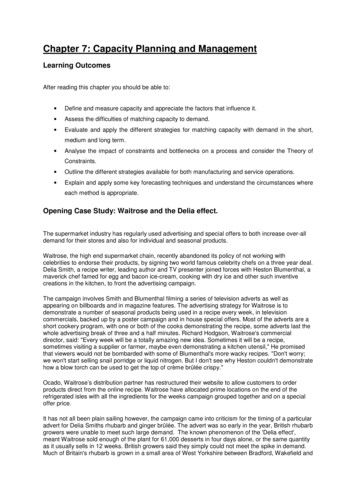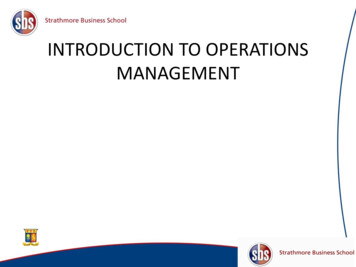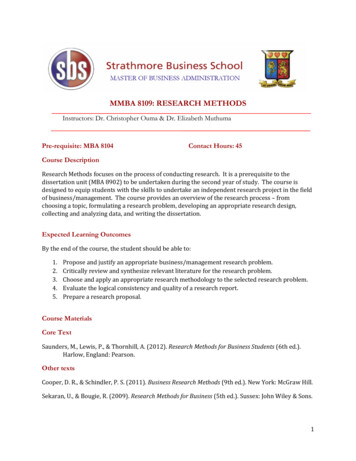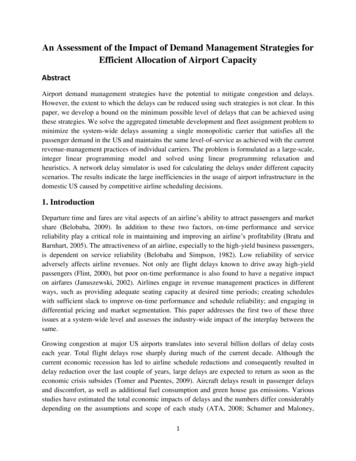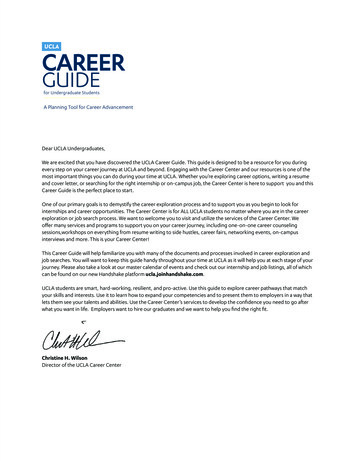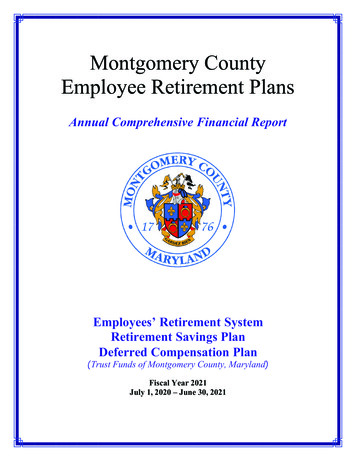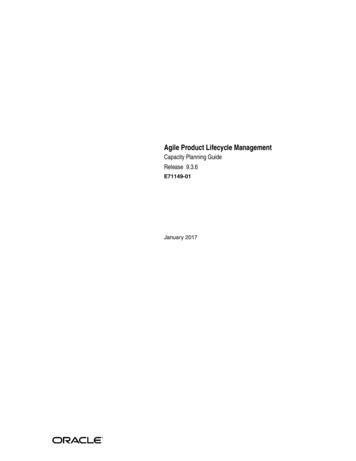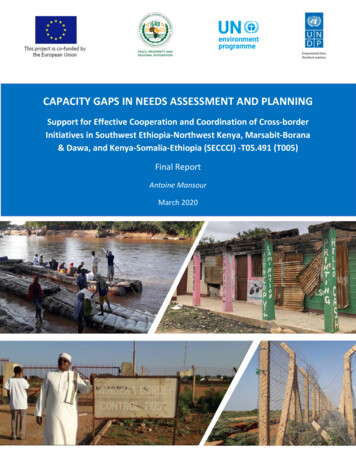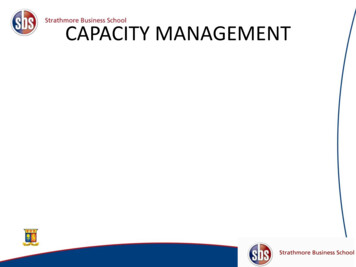
Transcription
CAPACITY MANAGEMENT
Introduction - Definitions Capacity can be defined as the ability to hold,receive, store, or accommodate Capacity planning is an approach fordetermining the overall capacity level ofcapital intensive resources, including facilities,equipment, and overall labor force size
Examples of Capacity Amount of output that a system is capable ofachieving Number of customers Served within a specific period Number of products produced in a single shift Real or effective capacity depends on what is to beproduced Amount of resource inputs available relative tooutput requirements
Strategic Capacity Planning Helps determine overall capacity level ofcapital intensive resources Capacity level selected has impact on:– Firm’s service rate– Cost structure– Inventory policies– Management and staff support requirements
Capacity Level Inadequate capacity leads to:– Slow service– Loss of customers– Entry of new competitors Excess capacity––––Reduction in prices to stimulate demandUnderutilization of workforceCarrying excess inventorySeeking additional, less profitable products
Capacity Planning Concepts Best operating levels – design capacity Capacity utilization rate – how close to bestoperating level Capacity utilization rate (Capacity used) /(Best Operating Level)
Capacity UtilizationCapacityusedCapacityutilization rate Best operatinglevel Capacity used rate of output actually achievedBest operating level capacity for which the process was designed
Best Operating LevelExample: Engineers design engines and assembly lines tooperate at an ideal or “best operating level” to maximizeoutput and minimize wareAverageunit costof outputOverutilizationBest OperatingLevelUnderutilizationVolume
Example: Capacity Utilization During one week of production, a plant produced 83units of a product. Its historic highest or best utilizationrecorded was 120 units per week. What is this plant’scapacity utilization rate? Answer:Capacity utilization rate Capacity usedBest operating level 83/120 0.69 or 69%
Economies of Scale Average cost per unit of output drops as plant getslarger Plants also gain efficiencies when they become large Diseconomies become a problem when plantsbecome too large Size of plant influenced by external factors:– Cost of transporting raw materials and products– Potential market size
Effect of Learning Curve Plants gain experience as they produce moreCost of production falls in a predictable mannerLearning curve percentage vary across industriesLarge plants gain both from economies of scale andlearning curve advantages– Product must meet customers’ needs– Demand must be large to support volume
Illustration: Learning CurveYesterdayCost orpriceper unitTodayTomorrowTotal accumulated production of unitsAs plants produce more products, they gain experience in the bestproduction methods and reduce their costs per unit
Economies/Diseconomies of ScaleEconomies of Scale and the Learning Curve workingAverageunit costof nitplantDiseconomies of Scale start workingVolume
Capacity Focus Focus on a fairly limited set of productionobjectives Difficulty to excel in all aspects of production,i.e. cost quality, flexibility Select a limited set of tasks that contribute themost to corporate objectives Plants within plants (PWP) may be used
Capacity Flexibility Ability to rapidly increase or decrease productionlevels Ability to shift production capacity quickly from oneproduct to another Achieved through flexible plants, processes andworkers– Flexible plants – zero-changeover-time– Flexible processes – flexible manufacturing– Flexible workers – multiple skills
Capacity Expansion When adding capacity the following areconsidered– System balance– Frequency of capacity addition– External capacity
Example: System BalanceUnbalanced stages of productionUnitspermonthStage 1Stage 26,0007,000Stage 35,000Maintaining System Balance: Output of one stage is theexact input requirements for the next stageBalanced stages of productionUnitspermonthStage 1Stage 26,0006,000Stage 36,000
Balance System Perfectly balanced plant is not possible in practice Best operating levels for various stages of the plant may differ Variability in product demand and the processes lead toimbalance Dealing with imbalance:– Capacity can be added to stages that are bottlenecks– Buffer inventories in front of bottleneck stages– Duplicating facilities of a department that others depend on
Frequency of Capacity Additions Costs of upgrading too frequently– Direct costs – purchasing equipment Costs of upgrading too infrequently– Capacity is purchased in larger chunks– Leading to excess capacity
Capacity Upgrade
External Sources of Capacity May be cheaper to use some existing externalcapacity Outsourcing to partners Share capacity with other firms
Capacity Requirements Demand for individual product lines Individual plant capabilities Allocation of production throughout plantnetwork
Determine Capacity Use forecasting techniques to predict sales Calculate equipment and labor requirements Project labor and equipment available overthe planning horizon Capacity cushion to be maintained
Example: Capacity RequirementsA manufacturer produces two lines of mustard,FancyFine and Generic line. Each is sold in smalland family-size plastic bottles.The following table shows forecast demand for thenext four years:Year:FancyFineSmall (000s)Family (000s)GenericSmall (000s)Family (000s)1234503560508070100901008011090120100140110
Product from Capacity Viewpoint Question: Are we really producing twodifferent types of mustards from thestandpoint of capacity requirements? Answer: No, it’s the same product justpackaged differently.
Equipment & Labor RequirementsYear:Small (000s)Family (000s)1150115217014032001704240200 Three 100,000 units-per-year machines are available forsmall-bottle production. Two operators required permachine. Two 120,000 units-per-year machines are available forfamily-sized-bottle production. Three operators requiredper machine. Homework: What are the Year 1 values for capacity,machine, and labor?
Service Capacity Service capacity is more time and locationdependent Subject to more volatile demand fluctuations Utilization directly impacts service quality Unlike goods, service cannot be stored for later use Capacity must be available to produce a servicewhen needed
CAPACITY MANAGEMENT . Introduction - Definitions Capacity can be defined as the ability to hold, receive, store, or accommodate Capacity planning is an approach for determining the overall capacity level of . network . Determine Capacity Use forecasting techniques to predict sales
